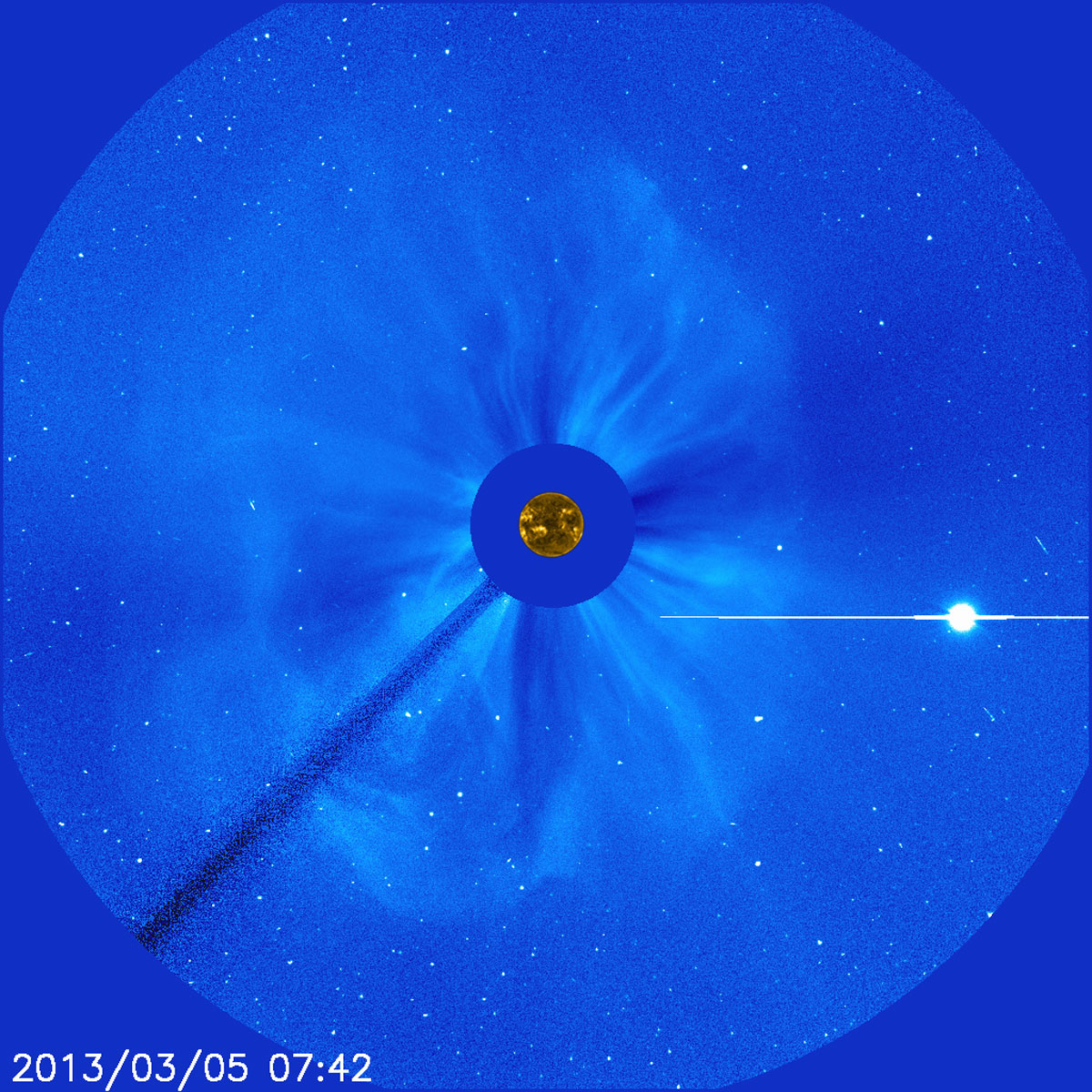Sun-Watching Observatory Celebrates 20 Stellar Years in Space (Video)
A satellite that has revolutionized scientists' understanding of the sun marked 20 years in space last week.
The Solar and Heliospheric Observatory (SOHO), a joint effort of NASA and the European Space Agency (ESA), launched into solar orbit on Dec. 2, 1995, to study the sun and its influence throughout the solar system. To celebrate the mission, NASA created an awesome video of SOHO's 20 years of sun images.
The spacecraft's mission — which was originally scheduled for just three years, but has been extended numerous times — has been a huge success, team members say. [Amazing Sun Photos from Space]
"SOHO changed the popular view of the sun from a picture of a static, unchanging object in the sky to the dynamic beast it is," Bernhard Fleck, ESA SOHO project scientist at NASA's Goddard Space Flight Center in Greenbelt, Maryland, said in a statement.
SOHO has made a variety of scientific contributions over the years, some of them a bit unexpected; the observatory is the greatest comet hunter of all time, for example, discovering more than 3,000 of the icy objects to date. But SOHO was initially launched to answer three main questions: What is the interior structure of the sun? How fast is the acceleration of the solar wind, the flow of charged particles streaming from the sun? And what causes the extraordinarily high temperatures in the sun’s outer atmosphere, known as the corona?
Data from an instrument onboard the SOHO sun observatory that takes a sort of solar sonogram answered the first question, which in turn helped researchers solve the "solar neutrino problem" — basically, why a certain type of neutrino (a subatomic particle) was not observed as frequently as expected here on Earth, given its predicted abundance on the sun.
"Getting an accurate picture of the interior structure of the sun confirmed our theories about the number of neutrinos it emits," Fleck said. "That proved the solar neutrino problem came from a misunderstanding of neutrinos themselves, not the sun."
Breaking space news, the latest updates on rocket launches, skywatching events and more!
SOHO helped discover that neutrinos can change in type along their journey from the sun, which accounted for the difference between scientists' predictions and observations, NASA officials said.
SOHO also helped scientists learn more about solar wind acceleration. For example, the spacecraft's observations have shown that some of the fastest solar winds are accelerated in "coronal holes" — areas where the sun's magnetic field is open to space.
But as of now, not even SOHO data can why the corona is so hot.
"The corona is incredibly hot, hundreds of times hotter than the layers below," Fleck said. "Since the sun’s source of energy is at the center, on a simple level, we would expect the corona — the outermost layer — to be the coolest."
NASA's Solar Probe Plus mission, planned to launch in 2018, will fly closer to the sun than any spacecraft ever has to investigate this intriguing question further.
SOHO's observations helped lay the foundation for Solar Probe Plus, as well as many other solar missions past and future, NASA officials said.
“SOHO showed us things we’d never seen before, and then we realized we needed more eyes on the sun," Alex Young, a space scientist at NASA Goddard, said in the same statement.
The observatory has also given scientists a better understanding of space weather, including coronal mass ejections (CMEs), giant explosions of solar plasma blasted into space at millions of miles per hour.
"In light of the SOHO data, we realized CMEs are much more common — and more variable throughout the solar cycle — than we thought," Joe Gurman, U.S. project scientist for SOHO at NASA Goddard, said in the statement.
Powerful CMEs that hit Earth can spawn geomagnetic storms, which in turn can ramp up the northern and southern lights and temporarily disrupt GPS navigation and power grids. So SOHO's work has some very down-to-Earth applications.
"Thanks to SOHO, there’s a growing public recognition that we live in the extended atmosphere of a magnetically active star," Gurman said. "And people realize that solar activity can affect Earth."
Follow Kasandra Brabaw on Twitter @KassieBrabaw. Follow us @Spacedotcom, Facebook and Google+. Originally published on Space.com.

Kasandra Brabaw is a freelance science writer who covers space, health, and psychology. She's been writing for Space.com since 2014, covering NASA events, sci-fi entertainment, and space news. In addition to Space.com, Kasandra has written for Prevention, Women's Health, SELF, and other health publications. She has also worked with academics to edit books written for popular audiences.


